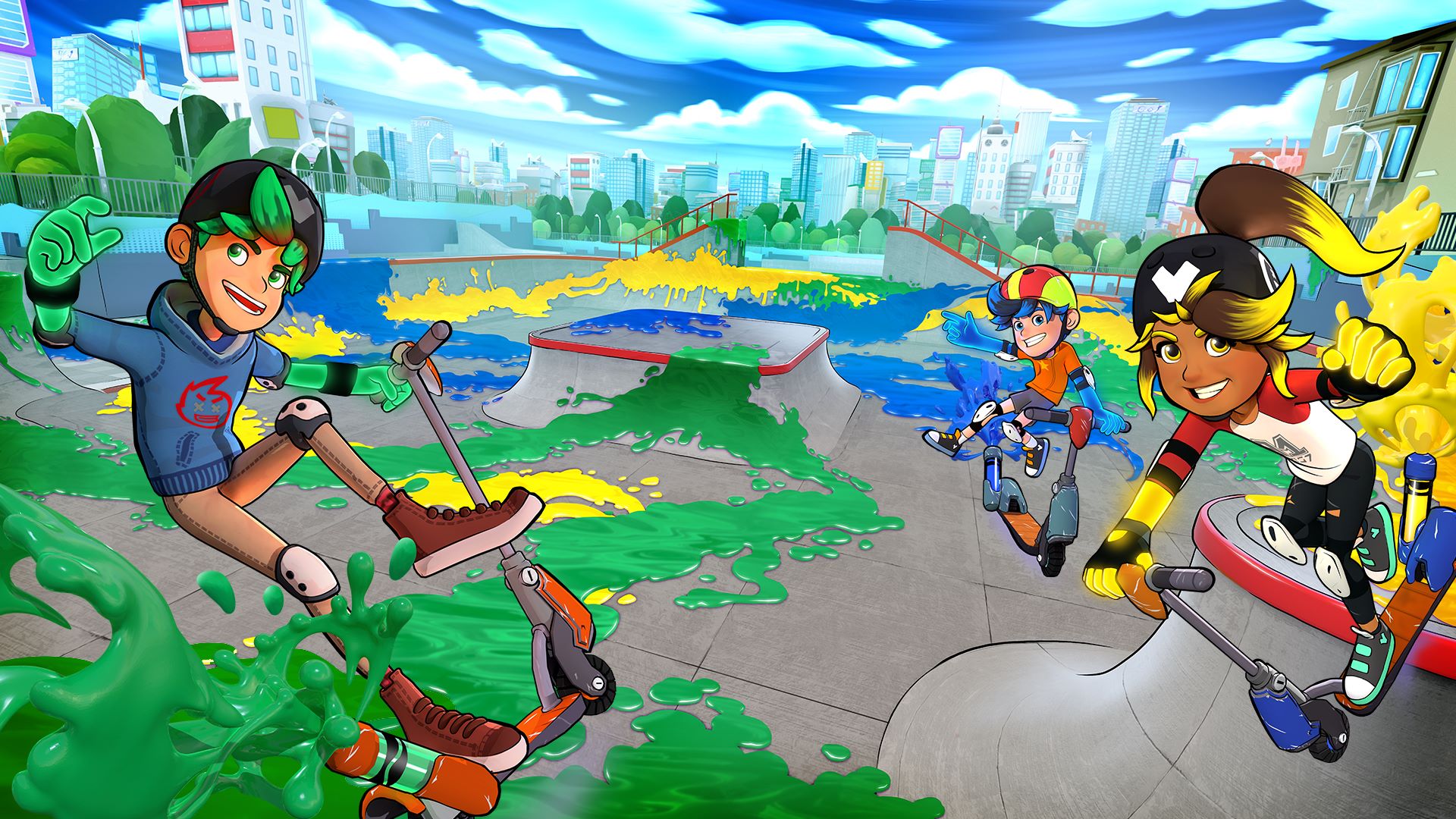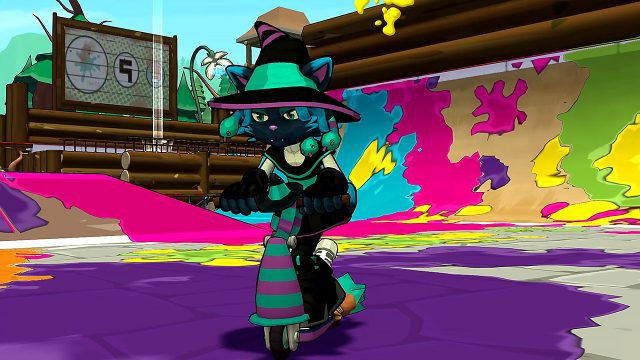
As a child of the 90s, I had the pleasure of growing up during the heyday of extreme sports video games. From the first Tony Hawk’s Pro Skater game on, I was hooked, and couldn’t get enough of that series and some of its peers. Thus, many good memories are based around titles like the N64 version of Tony Hawk’s Pro Skater, the PS2 version of Tony Hawk’s Pro Skater 3 and both the PSX and Game Boy Advance versions of Tony Hawk’s Pro Skater 2. To say that I was addicted to them would be quite fitting.
Fast forward to today and there’s a dearth of such games. With the heyday being over, the genre has mostly come to a standstill, outside of the odd title. Attempts at revitalizing Tony Hawk games failed, due to poor quality and terrible glitches, and nothing much has come out in the last while.
Enter Crayola Scoot, a kid friendly title that will never fill the hole that those mainline extreme sports series left, but is something. A blip on the lifeline, so to speak.
The best way to describe Crayola Scoot is to call it a blend of Tony Hawk’s Pro Skater and Splatoon, because it really feels like that. The difference is that, instead of using a skateboard or paint, one gets to ride upon and wield a scooter. The gameplay is never as advanced or as polished, either, but that’s to be expected given that this is a licensed title that has been made for kids.
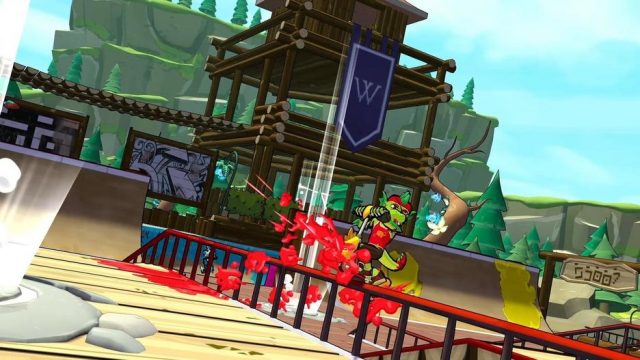
Upon starting their ‘career,’ players are asked to create an avatar, be it of the male or female variety. They’re then tasked with choosing a colour, which is used to highlight that avatar’s hair and mark their presence. It’s here where the Splatoon similarities come into play, because so much about this game is based around spreading colour. Every time a successful trick is completed, your chosen colour marks the nearby ground, and the same is true of each grind, speed burst or combo. This is not only a visual indicator of where you’ve been, but also a gameplay mechanic. I say that because, much like with Splatoon, certain game types base their winner on the person (or team) that covers the most ground in their respective colour of paint.
That isn’t the only mode to be found within Crayola Scoot. As expected, there are also trick events, which award victory to the player who scores the most points, races where the goal is to be the first to collect five crayons and tag challenges where you’re either trying to tag other riders or avoid ‘infected’ ones. I’m using the term infected loosely here, because this is a kid’s game after all.
Events play out in multiple skate parks, all of which are spread across three different islands. There’s the city island, a jungle island with its own castle-like environments, and an alien-themed one. It doesn’t take long to unlock all three, but that doesn’t mean that all of their events are made available to you upon doing so. No, they’re all linked to specific player levels, which you earn by filling a progress meter and then challenging the colourful character (be it a knight, a cat, a zombie or something else) who holds that spot on the leaderboard. Your goal, then, is to climb to the top of the Colour Cup leaderboard, and it won’t take too long to do.
Experience is earned based on placement and completed challenges, which relate to colouring in graffiti, expelling the most colour and things of that ilk. Surprisingly, even though the game has a star-based rating system, wherein each event has three available stars, they don’t mean a whole lot other than being used to dictate difficulty. Sure, you earn more experience on higher difficulties, but it’s not like you need to really worry about the amount of stars you’ve earned in order to beat the game.
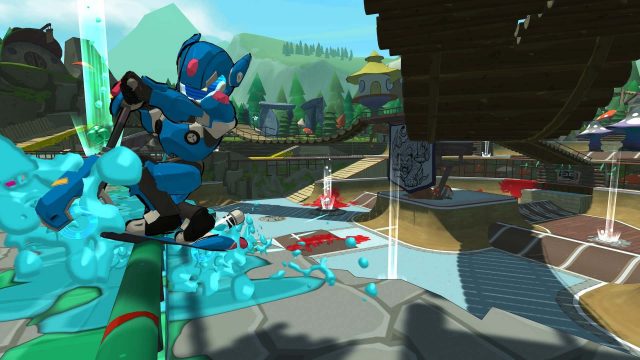
That’s a good thing, too, because Crayola Scoot is a surprisingly difficult game on anything other than easy. As someone who’s been playing video games (including extreme sports titles) for more than 20 years, and has generally been quite good at them, I expected to have no trouble with this one. Boy was I wrong, though. The AI is pretty unfair on normal and hard, and for a kid’s title that’s pretty surprising. In fact, they can be pretty ruthless, right from the start.
Due to the above, the problem that I ran into was that playing on easy was too easy and playing on anything else was frustrating. That’s a definite design problem and something that I wish they would fix by patch. This is supposed to be a game for children, after all.
Outside of this ‘campaign,’ you’ll find a hub area that contains a large practice park, a shop, and an arcade. The idea is that, as you progress you’ll earn money that can then be used to purchase new clothing (helmets, shirts and shorts) items and better parts for your scooter. New parts become available each time you increase in rank by challenging and beating a pro at a game of HORSE. That is, the skating challenge in which athletes try to one-up each other’s tricks and combos.
Equipping better parts improves your statistics, but each part comes with pros and cons. One may increase your speed while decreasing your trick capabilities, whereas another may make you jump better but lower your handling skill. The goal is to find a loadout that works for you.
The arcade, on the other hand, is said to be where one can challenge the pros a second time, but I didn’t see that option. It is, however, the place where local multiplayer lives. Through it, you can bring up to a few friends into your game and scoot alongside them. I never did, though, because I didn’t have anyone to play with.
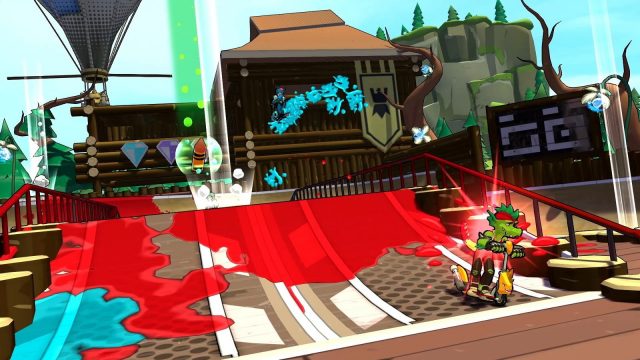
So…how about those tricks?
Almost everything one does in Crayola Scoot is handled through the left and right joysticks. Think of the controls as being a more basic version of Skate‘s, wherein one can flick the left stick forward to hop and incite a longer jump by pulling it downward before doing so. Tricks are handled through different rotations and movements of the right joystick, whereas rotations are handled with the left one, and the same goes for flips. Meanwhile, another button toggles boost and the Y button is used for grinding.
Overall, it’s a pretty simple and easy to get accustomed to control scheme. It works pretty well, too. At least, for the most part. Falling doesn’t happen a lot because of the game’s kid friendly nature, but it can be hard to feel as if you’re in full control. To score high amounts of points, you’ll want to do multiple tricks off of each jump, and that can leave you open to an unexpected fall due to the control scheme being what it is. Sometimes it’s hard to tell if you will or won’t fall, as well.
All of the above is portrayed in a cel-shaded visual style, which makes good use of exaggerated character designs and vibrant colours. There’s some nice detail, but I’d be lying if I said that the graphics engine is up to par with the best out there. Overall, this is a decent-looking and animated game that runs pretty well and has an art style that certainly serves its purpose, even if it apes Splatoon. It also sounds okay for what it is, but may have older gamers hitting the mute button because of its ‘for kids’ nature.
Crayola Scoot can be fun, and can also be relaxing. Meanwhile, it can also be frustrating and frenetic. That’s the nature of a game like this, which mimics other titles but doesn’t have as much polish or fine tuning as they do or did, in the case of Tony Hawk’s Pro Skater. The difficulty is uneven, the controls aren’t perfect, and the game doesn’t take long to beat, but there’s some fun to be found. In fact, younger audiences will likely enjoy just riding around in the practice park.
If you have a kid who would be into a game like this, or happen to be looking for something you can beat quickly and get some achievements or trophies out of, you can certainly do worse than Crayola Scoot. It’s a decent, albeit unspectacular game, and one that ended up being better than I’d expected.
**This review is based on the Xbox One version of the game, which we were provided with.**

